|
Two million acres of old-growth redwood forests graced a 20 to 30 mile deep swath of land from Big Sur to southwestern Oregon. They were the keystone species in a rich and diverse ecosystem. Indigenous people have lived in harmony with redwoods for more than 10,000 years. Then the white people came, seeking fortune from gold in the hills and rivers. Soon, they discovered the extraordinary utility of lumber from these massive redwood trees with their fire and insect resistant qualities. Early lumbering methods were labor intensive so cutting of the trees was a slow process. However, with the introduction of steam-power, processing of trees become much faster and cost-effective. Entire groves of redwood forest disappeared to the mills in Eureka and Scotia and before long, only a small fraction of old-growth trees remained. Falk Lumber Company - 1897In 1882, the Elk River Mill and Lumber Company purchased 9,000 acres of redwoods on the South Fork of the Elk river, not far from Eureka. The company built the town in 1884 to house 400 lumberjacks and their families from Sweden, Norway, Ireland, and Nova Scotia. The town had a cookhouse, dance hall, general store, post office, and school. The lumber operations shut down in 1937 in the midst of the Depression and the last buildings were demolished in 1979. 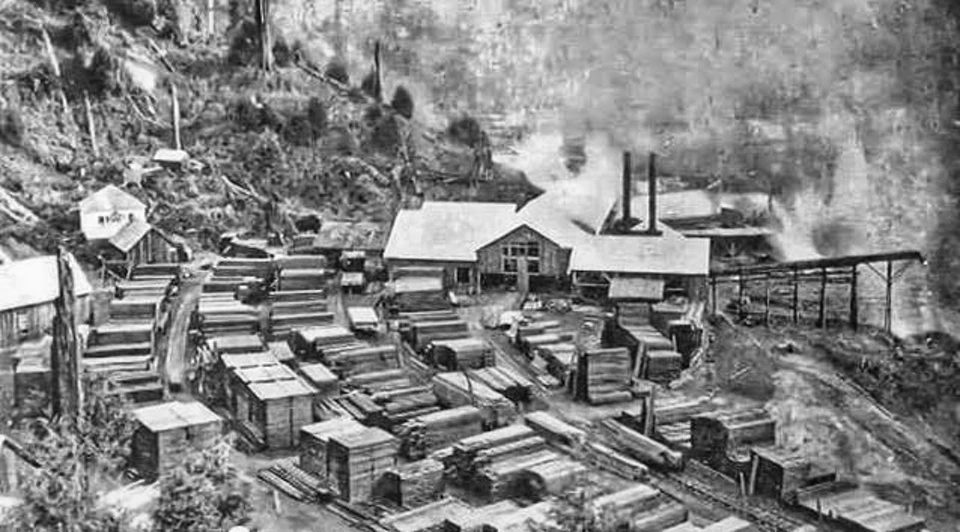
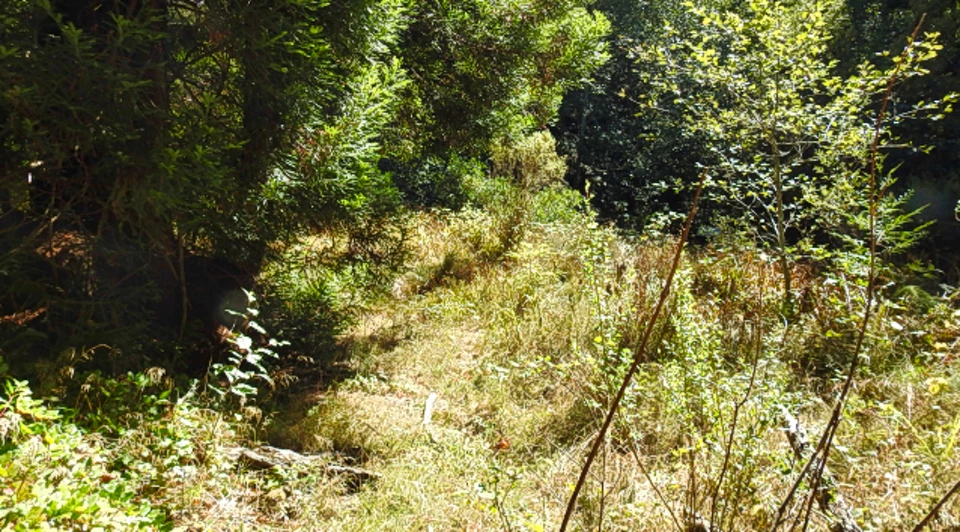
Left image
Right image
Scotia Ballfield - ca. 1890sThe Town of Scotia is one of America’s longest surviving company towns. The first Pacific Lumber Company employee bunkhouse was built in 1884 in Scotia, near the site of the company’s first logging operations. The community grew rapidly when the company built a mill in 1887 with 150 men and 100 houses. The San Francisco earthquake and fire of 1906 accelerated the demand for redwood lumber to rebuild the city. Pacific Lumber Company and its company town of Scotia grew along with the increased demand. By the 1920s, the town had a theater, baseball teams, a new bank building, new school, hospital and church. By 1929, the population was 1,000, the second largest town in Humboldt County.This pair of photos is located outside the boundaries of Redwood National and State Parks. 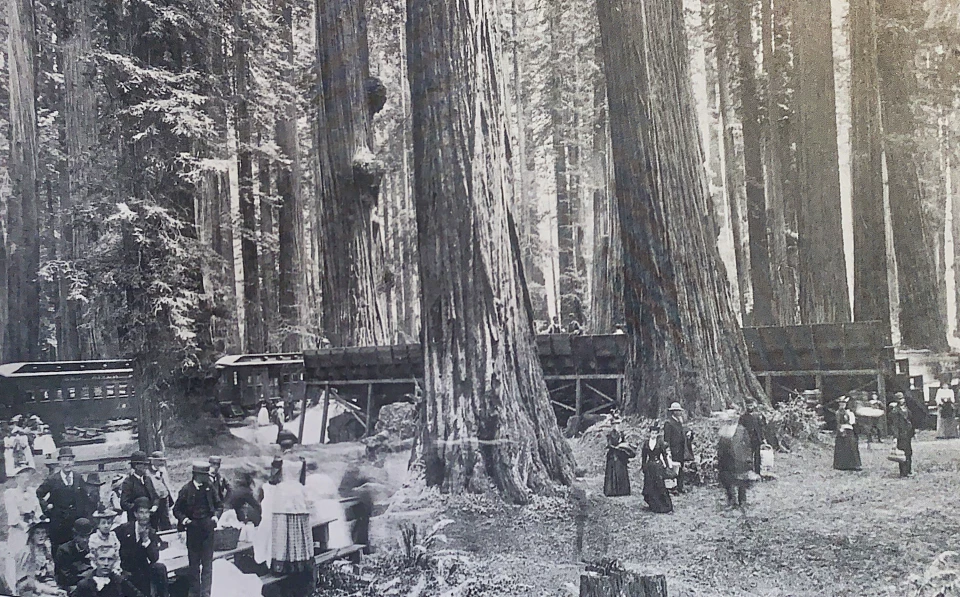
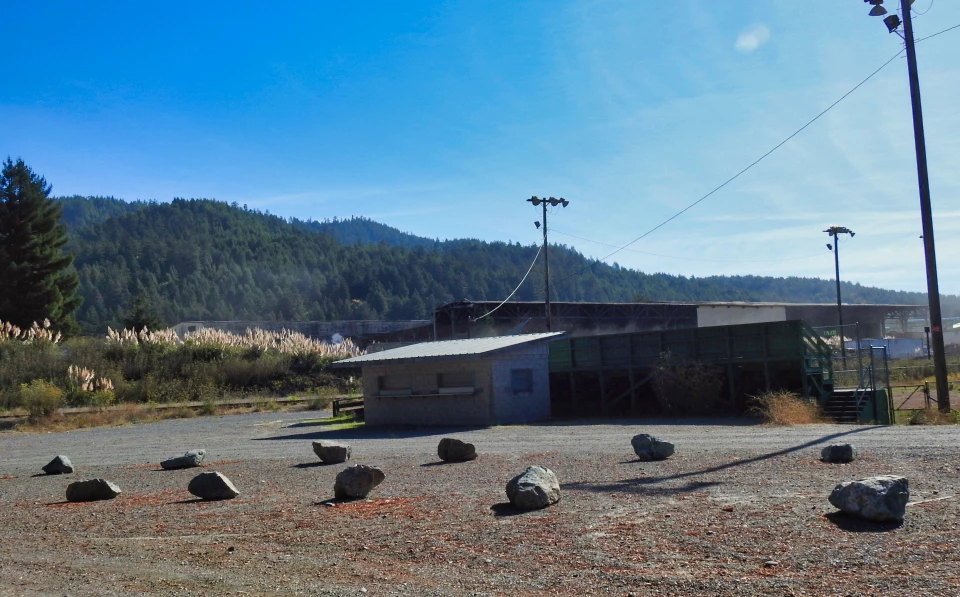
Left image
Right image
Vance's Pond - 1893John Vance, born in Nova Scotia in 1821, arrived in Humboldt County in the early 1850s. After a short stint working in a lumber mill, he started buying properties including mills and properties on the Eureka waterfront. 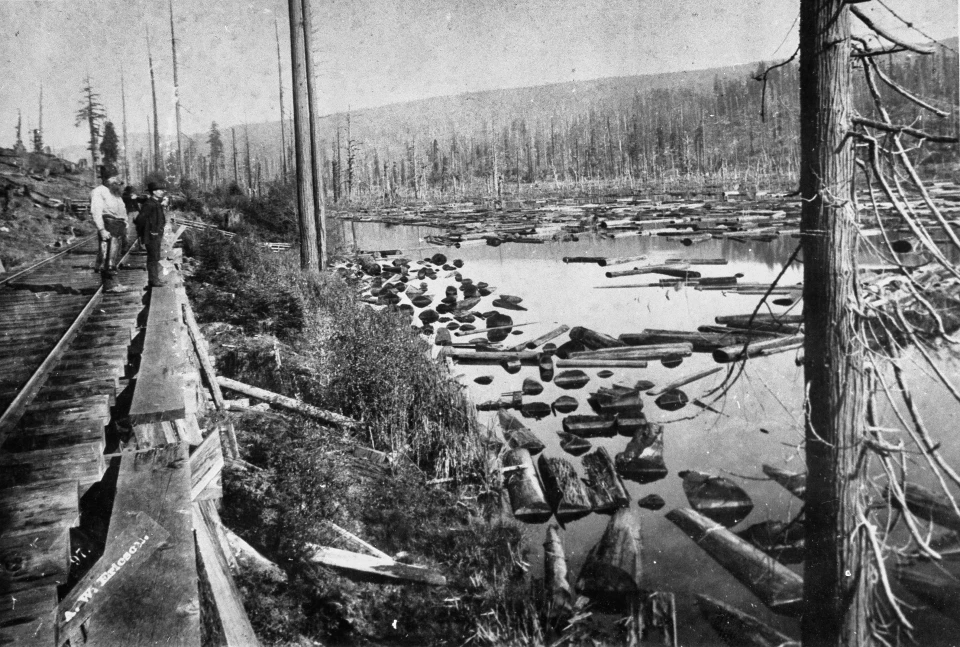
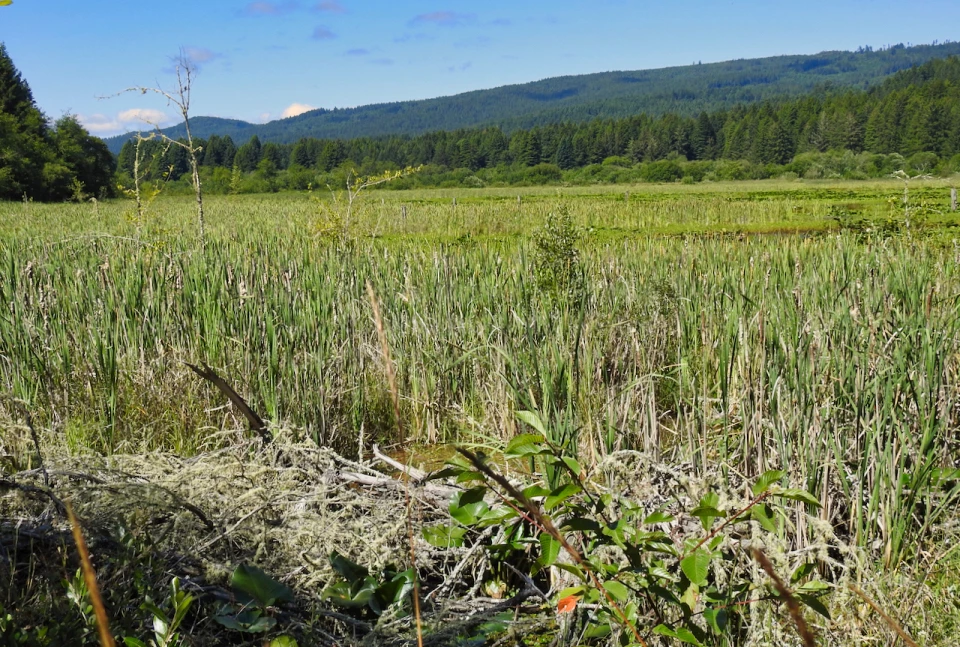
Left image
Right image
Excelsior Redwood Company Trainload of Logs - ca. 1900Prior to the completion of the Northwestern Pacific Railroad in 1914, linking Eureka to San Francisco, local railroads were used to transport logs from the forests to local mills and then out long wharfs. Companies like Excelsior Redwood Company used regular or narrow gauge rail lines to access remote forests and extend the lines as they depleted the forests. They were often built quickly and not well-engineered, so they often failed or the wooden bridges were sometimes burned by the locomotives themselves. 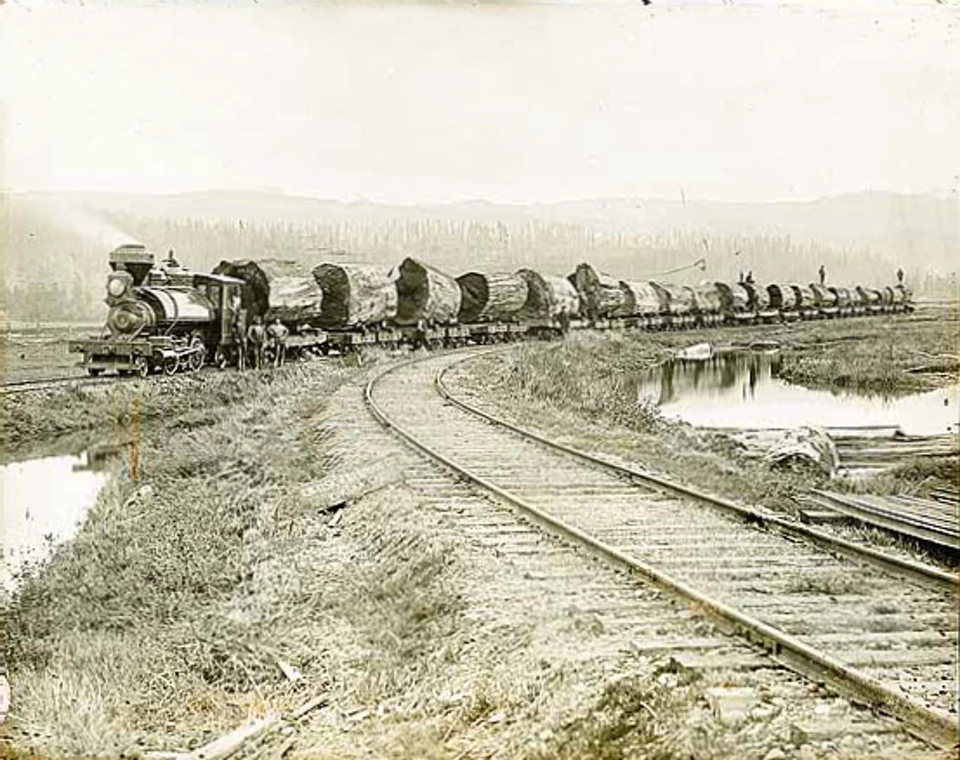
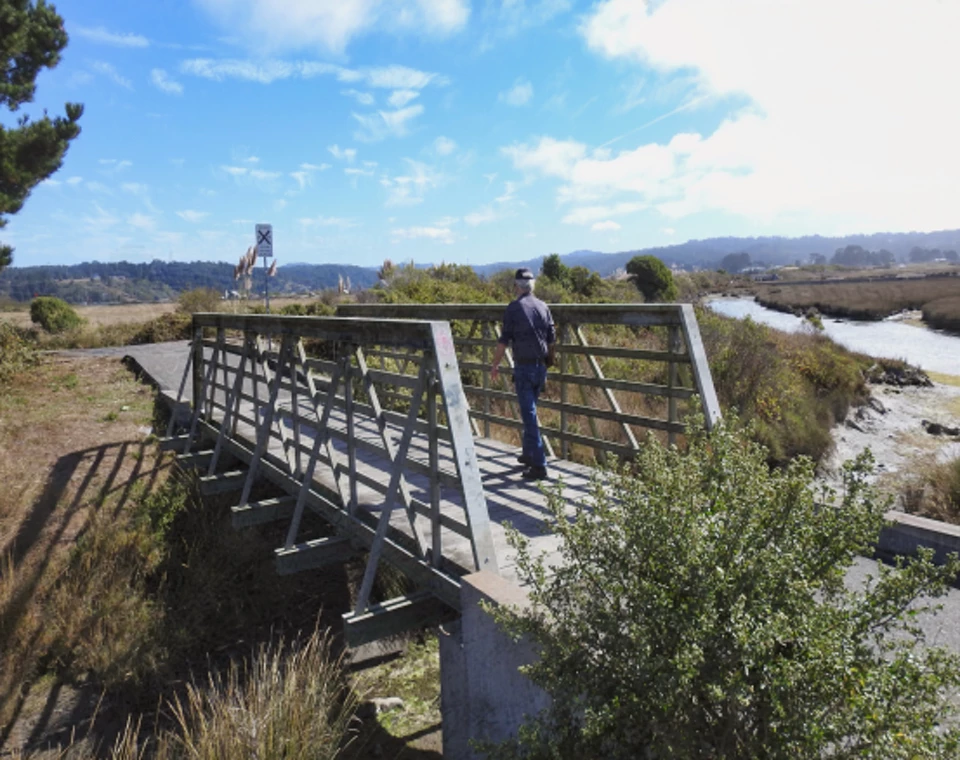
Left image
Right image
Scotia Business District - ca. 1920In 1928, Pacific Lumber, headquartered in Scotia, offered to donate several hundred acres of old-growth redwood stands in the Dyerville area south of town. The deal they wanted was for the Save-the-Redwoods League to stop agitating for the preservation of other Pacific Lumber holdings, particularly in a spectacular 1,000 acre grove up Bull Creek. The League refused and after some legal action and testimony before the Humboldt County Board of Supervisors, Pacific Lumber and the Save-the-Redwoods League agreed that the groves would be protected until the League could raise the money to buy the land and trees.Scotia sits alongside the Eel River, south of Rio Dell. During the heavy rains of December 1964, the Eel flooded over its banks and 18-million board feet of redwood logs and 23-million board feet of lumber were washed out of the sawmill into the river. Much of the timber flowed to the Pacific Ocean and travelled as far as the mouth of the Columbia River, nearly 400 miles to the north. This pair of photos is located outside the boundaries of Redwood National and State Parks. 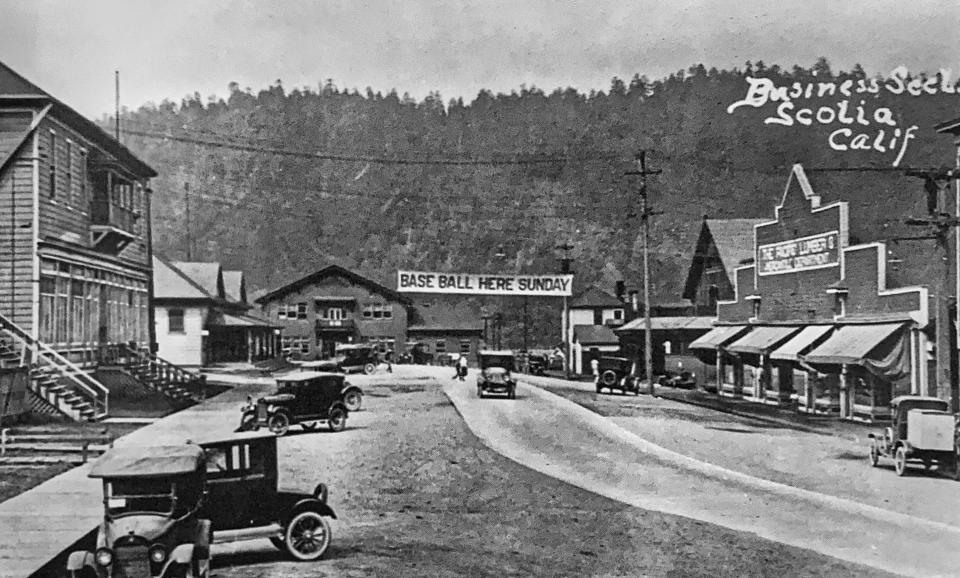
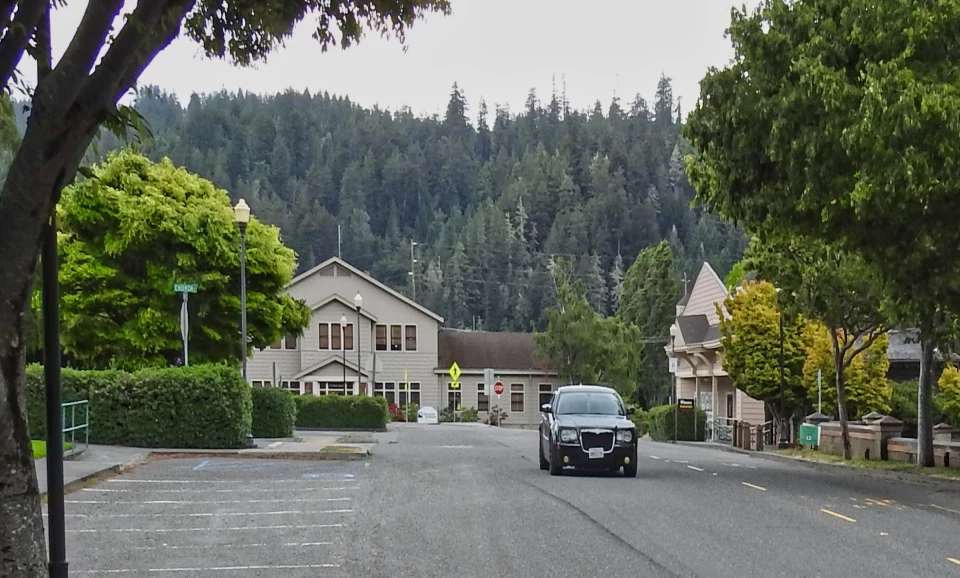
Left image
Right image
Lumber Mill at Kuchel Visitor Center Site - ca. 1960sIn 1963, the National Geographic Society financed a NPS study of California Coast Redwoods. It’s main finding was that without protection, all old growth redwoods would be gone by the year 2000. President Lyndon Johnson called for the creation of Redwood National Park in 1966. Despite his plea, “spite cutting” continued by Rellium Redwood Company until Johnson made a special appeal. 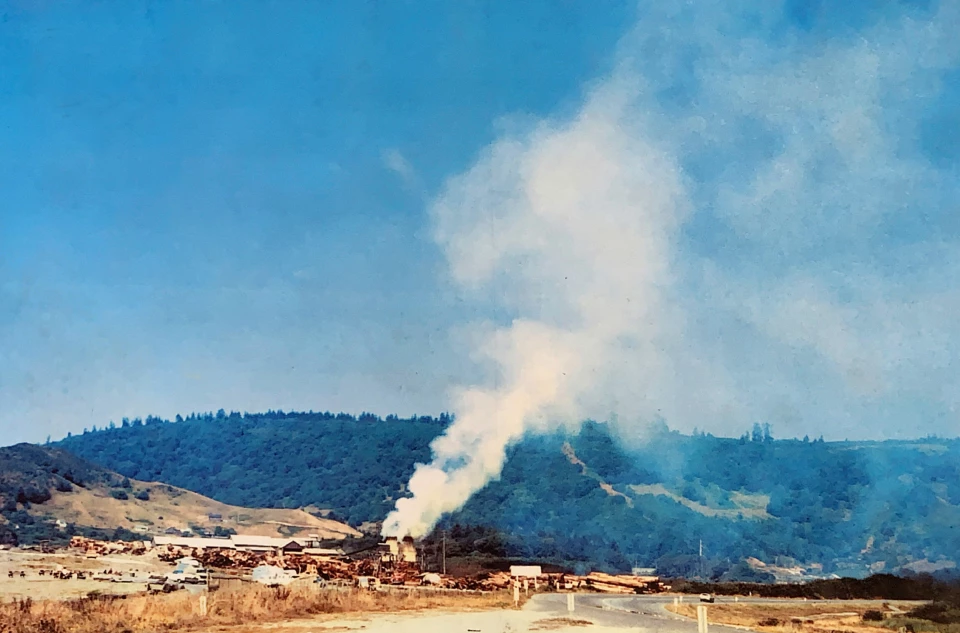
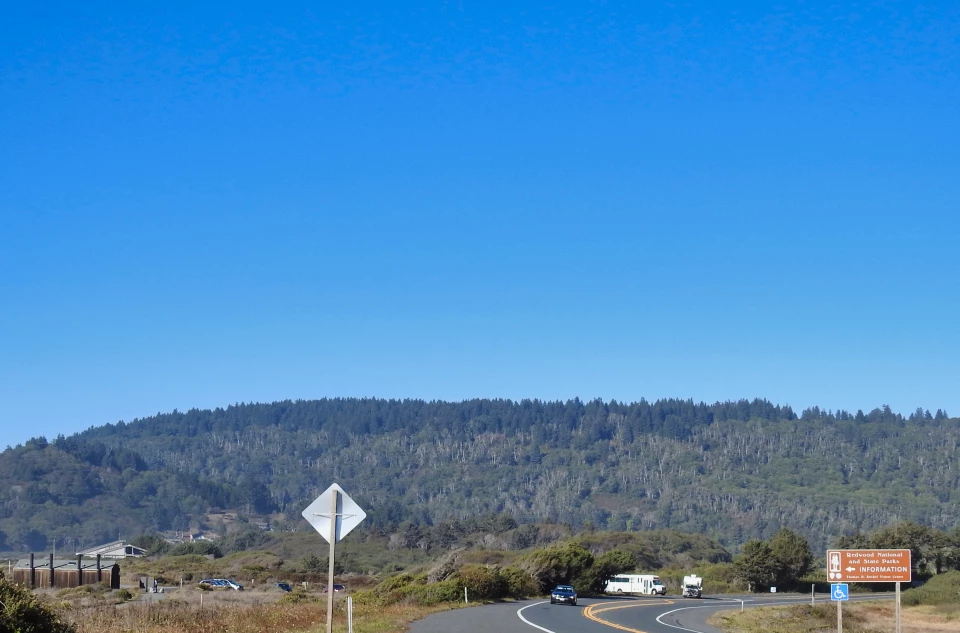
Left image
Right image
Return to "Then and Now" homepage
|
Last updated: October 12, 2022
